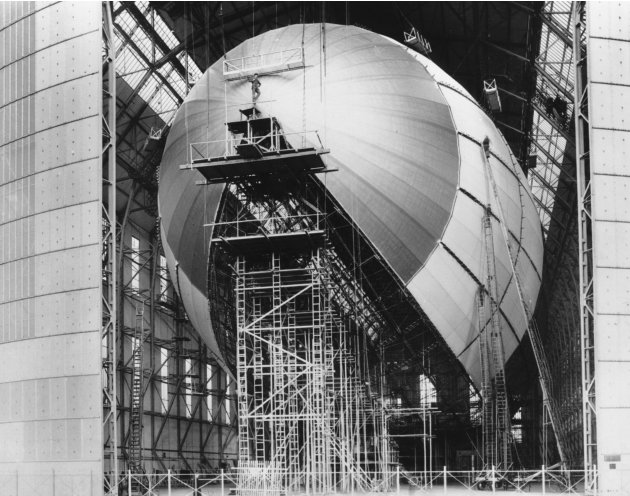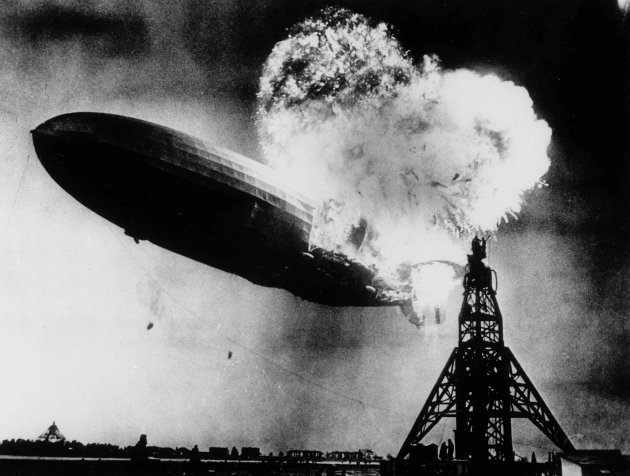The Hindenburg Disaster
May 6th marks the 75th anniversary of the Hindenburg disaster. The Hindenburg, a German zeppelin, burst into flame while attempting to dock at the Lakehurst Naval Air Station in New Jersey on May 6, 1937, killing 36 people. thank you battleskin88
It was the largest airship ever built; over eight-hundred feet long from its nose to its massive tail fins. It was the height of luxury travel and carried over 2,656 people across the Atlantic from Germany to New York and Rio de Janeiro. It was theHindenburg. In the space of 37 seconds the mighty zeppelin was destroyed in a fire that killed a third of its crew and passengers and left spectators crying in horror.
What caused this catastrophe? Was it negligence, sabotage, or as Hitler called it, “An act of God”?
The first successful dirigible (a balloon that has engines to control its horizontal movement) was built in France in 1852. Although other countries built these types of airships, the Germans quickly became the most advanced in this form of lighter-than-air technology.
 Count Ferdinand von Zeppelin, a German businessman, built a fleet of experimental dirigibles. The type of airships Zeppelin built were spindle-shaped with a rigid internal steel structure (unlike the flexible bodied blimps common today). Inside the craft were large bags filled with gas that gave the ship its lift as well as catwalks to allow the crew to move back and forth inside the hull to service the airship. Beneath the craft was a gondola which carried the crew and passengers. By 1911 Zeooelin’s airship LZ-10 (also known as the Schwaben) was in passenger service and would go onto make 218 flights carrying 1,553 passengers. Zeppelin became so well-known for this type of dirigible that his name soon became synonymous with that type of airship.
Count Ferdinand von Zeppelin, a German businessman, built a fleet of experimental dirigibles. The type of airships Zeppelin built were spindle-shaped with a rigid internal steel structure (unlike the flexible bodied blimps common today). Inside the craft were large bags filled with gas that gave the ship its lift as well as catwalks to allow the crew to move back and forth inside the hull to service the airship. Beneath the craft was a gondola which carried the crew and passengers. By 1911 Zeooelin’s airship LZ-10 (also known as the Schwaben) was in passenger service and would go onto make 218 flights carrying 1,553 passengers. Zeppelin became so well-known for this type of dirigible that his name soon became synonymous with that type of airship.
Starting in 1914, the beginning of WWI, the Count’s zeppelins were used to drop bombs on cities in a number of European countries. They made over fifty raids on London alone, dropping nearly 200 tons of explosives. As the war progressed, however, most of the German’s zeppelin fleet was destroyed by British guns or aircraft. The gas that gave them their lift, hydrogen, was very flammable, and even a small bomb hitting a zeppelin could reduce it to ashes in just a few minutes.
After the war Germany again began building large airships. As part of war reparations the Germans built the ZR-3 Los Angeles for the U.S. Navy. In 1928 the Zeppelin Company built what was the most successful passenger dirigible of all time, the Graf Zeppelin.

The dirigible Hindenburg is shown in its final stages of construction in Friedrichshafen, Germany, on March 6, 1936. (AP Photo)

-Lakehurst/New Jersey, May 6th 1937, 7 pm: The “Hindenburg” has come all the way from Europe a luxurious flying hotel, faster than any ship. The pride of the Third Reich prepares to land, and hundreds of onlookers have gathered to watch.Then, all of a sudden, a burst of flame just forward of the upper fin. In a matter of seconds, the largest airship ever built goes down in a fiery blaze.35 people died in the flames – and nobody knew why. Sabotage? A bolt of lightning? The mystery surrounding the disaster has never been resolved – until now. In many years of research, a NASA scientist at Cape Canaveral has found proof that neither the hydrogen in the hull nor a bomb was to blame, but the fabric of the Hindenburg’s outer skin and a new protective coating. A single spark of static electricity was enough to make it burn like dry leaves. The “infallible” German engineers had designed a flying bomb just waiting to explode.The dirigible Hindenburg is shown in its final stages of construction in Friedrichshafen, Germany, on March 6, 1936. (AP Photo) The fabric-covered walls in the main lounge aboard the zeppelin Hindenburg were decorated with a map of the world showing the routes of famous explorers, seen in this undated photograph. (AP Photo) The German zeppelin Hindenburg flies over Manhattan on May 6, 1937. A few hours later, the ship burst into flames in an attempt to land at Lakehurst, USA. (AP Photo) This May 6, 1937 file photo, taken at almost the split second that the Hindenburg exploded, shows the 804-foot German zeppelin just before the second and third explosions send the ship crashing to the earth over the Lakehurst Naval Air Station in Lakehurst, N.J. (AP Photo)



No comments:
Post a Comment